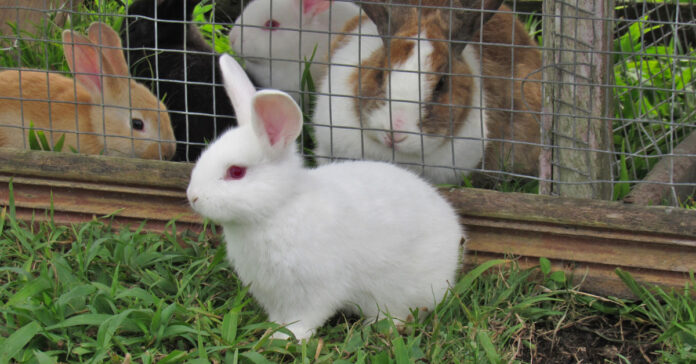I was reviewing some old PDFs I had in my “prepping” folder and I came across these figures from a book copyrighted in 1922:
“Eight rabbits and their offspring will produce in one year 480 rabbits, making 3,080 pounds of meat. Fifty chickens will produce in one year 600 chickens making 2,400 pounds. Two pigs (sows) will produce in one year 32 pigs weighing in all 2,800 pounds. Six sheep will produce in one year 9 lambs weighing 800 pounds. One cow will produce in one year one calf weighing 300 pounds.”
Granted, this was from Common Sense Rabbit Raising, a book clearly written to promote raising rabbits, and our chickens are bigger and heavier 100 years later, and it depends on the breeds. The exact numbers may no longer be correct, but the idea remains on target, especially from a homesteading point of view.
I’m not sure I want to eat rabbit daily, but in a survival situation, I can see how it might be very desirable to have one or two to eat every week.
Rabbits are Productive and Efficient
From the more modern numbers I’ve seen, a doe can easily give about 30 to 40 kits a year with no over-breeding, meaning she isn’t bred again until her litter is weaned. Two does might produce up to 80 rabbits annually. I’d estimate that is 250 to 300 pounds of meat, depending on the breed and the age at which you butcher them. (Often around eight weeks is considered the most efficient in terms of meat produced for food consumer.)
I’ve eaten rabbit on multiple occasions in a variety of dishes. It was good, but I don’t recall if it was exactly like the book describes: “A fine grained white meat that is highly nutritious and very nourishing, and everyone who has tried this meat will want more.”
What I do know is rabbit meat has very little fat and you cannot survive on it alone. That’s where eating your eggs every day and cooking with oil or lard will help.
I am Considering Rabbits
I’m considering adding rabbits for the homestead next year. Eggs harvested daily, honey harvested twice a year, rabbit meat harvested every week, and the occasional chicken in the pot is a winning combination in my book. Add garden produce and foraging for wild foods, and we would have a nice addition to our stored foods.
From a prepping standpoint, rabbits make excellent livestock. They are inexpensive to raise, take up minimal space, make little noise, and can eat many of the greens and weeds growing all around us. Best of all, they are very low profile. You could raise them in your garage or basement and no one would be the wiser unless they sniff them out.
And given the rising cost of meat, harvesting four pounds of meat a week is a welcome cost savings.
Before I jump in to raising rabbits, I have much more research to do. I need to find out:
- Whether I want to raise them in a colony or in individual coops, and the best designs for each
- A good design for the coop and/or colony plus nest area
- What breed I should start with
- What my start-up costs will be
- The price of rabbit feed and a local source of good quality alfalfa hay
- If there is a market for rabbit meat, pelts, and manure in my area
If I am to sell rabbit meat, like I will honey, I need to know if there are any state restrictions on the processing and sale of rabbit meat or on selling rabbits as pets, if there are inspections required, and if I can do my own processing.
Making a Profit on my Self-sufficiency
I very much like the idea of creating a small commercial enterprise using the infrastructure I have built and the knowledge and experience gained by becoming more self-sufficient. If it pays for some or all of our costs while putting food on the table, so much the better.
I am not raising chickens to sell eggs; I am raising them so I can eat free-range non-GMO eggs. However, I am not against selling a few eggs on the side. Selling four dozen free-range eggs will pay for a bag of feed.
I am not a beekeeper because I think it will lead to wealth, but I am happy to sell jars of surplus honey along the way. Once you are caring for three or four hives, caring for eight or ten isn’t much harder. I expect I will reach a point where I decide I have enough hives, but that’s at least a couple of years down the road.
If I start off with two breeding does and a buck to learn the ins and out of running a successful rabbitry, I don’t imagine adding a couple more does to the lineup will be much more trouble.
Another advantage is that selling excess product gets our production ramped up. If our social and/or economic systems collapse and our household of two becomes six or twelve as our kids and another prepper family move in, we will need that excess production. If we don’t have so big a crowd, it will be good for barter and as gifts to help our neighbors survive.
Yep, the more I think about it, the more I like the idea of raising rabbits. Besides, I need a project for 2022.







